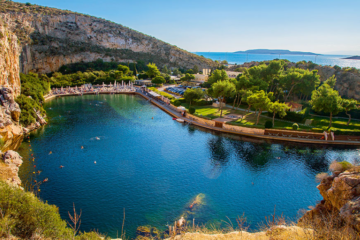Would you like to take on an amazing journey such as reaching the Everest Base Camp? It’s important to educate yourself with important information, like costs, itinerary, and logistical issues, before embarking on this amazing vacation. With all the essential information you need, this complete guide to the Everest Base Camp Trek is made to help you plan this thrilling journey.
Despite its tiny size, Nepal is known around the world as “the Land of the Himalayas” and is home to a wide variety of species, cultures, and topography. Nepal boasts eight of the world’s fourteen highest mountains, including the towering Mount Everest, the highest peak in the world.
The Everest Base Camp is one of the most well-known trekking locations in Nepal, drawing hikers from all over the world. Our goal in writing this guide to the Everest Base Camp Trek is to provide you with the knowledge you need to make the journey. But before setting off on the Everest Base Camp journey, there are a few things to consider.
A Complete Guide for Everest Base Camp Trek
Like every other expedition, climbing the highest peak in the world starts with a dream. For brave explorers looking for a strenuous trek with breathtaking rewards, the Everest Base Camp Trek is an incredible chance. A trip to the mountain museum in Nepal’s Everest region is only one way to experience the friendly welcome of the inhabitants.
Humanity has been struggling for ages to solve the puzzles and overcome the power of Mount Everest. Nepal is forever changed by the Himalayas; their presence has shaped the country’s climate, topography, architecture, and even dominant religion. This is the reason the Everest Base Camp walk still has such a magnetic pull, while some people might prefer the peace and quiet of the Annapurna Region. This article provides a detailed plan for climbing Mount Everest to the base camp.
Situated at 5,516 meters (18,513 feet) above sea level, Everest entices hikers with its stunning peaks, sloping valleys, and the wide blue sky that surrounds it. Reached during the Mount Everest Base Camp expedition, Kalapatthar, the trek’s apex, provides an unmatched vista of the mountain’s top.
Why Everest Base Camp?
There is no shortage of strong arguments for choosing to trek to Everest Base Camp. Through this journey, you will get the chance to fully immerse yourself in the rich culture and way of life of the Sherpa people, learning about their distinctive customs and ways of life. In addition, the opportunity to be in close vicinity to Mount Everest, the highest peak in the world, which rises to an incredible 8,848 meters, is an unmatched achievement that attracts travelers to this legendary location.
The Everest Base Camp hike also affords magnificent views of other peaks, such as the towering 8,516-meter Mt. Lhotse, the imposing 7,165-meter Mt. Pumori, and the beautiful 8,485-meter Mt. Makalu. Trekkers can add a historical and cultural element to the expedition by exploring UNESCO-designated World Heritage Sites along the way.
A wide variety of plants and animals may be seen along the Everest trail, which is highlighted by the vast stretches of landscapes that house many ecosystems. If one delves further into the trip, the historic Pangboche monastery serves as a reminder of the area’s spiritual legacy and provides an insight into the deep devotion ingrained in the local way of life.
The variety of animals that adorns the trek’s path captivates both nature lovers and wildlife fans. This walk offers chances for uncommon and thrilling wildlife sightings, from the elusive snow leopard to the vivid plumage of colorful pheasants, from the robust Himalayan Thar to the elegant musk deer.
Everest Base Camp Trek Highlight
- absorption in the customs and hospitality of the Sherpas.
- standing close to 8,848-meter Mount Everest, the highest mountain in the world.
- breathtaking views of Makalu, Pumori, and Lhotse, among other nearby peaks.
- exploring the rich historical and cultural legacy of UNESCO World Heritage Sites.
- coming into different types of plants and animals in different environments.
- touring the venerable Pangboche monastery, a refuge for the soul.
- observing wildlife, such as vibrant pheasants and elusive snow leopards.
- Seeing elegant musk deer and burly Himalayan Thar.
- reaching the summit of Kala Patthar to see a breathtaking glimpse of Everest.
- Enjoying success, adventure, and lifelong experiences while traveling this legendary route.
Everest Base Camp Trek Summary
There are 5,821 meters (19,097 feet) of descent and 6,015 meters (19,734 feet) of ascent in the Everest Base Camp Trek. At 5,640 meters (18,500 feet), Kala Patthar is the highest point attained, and 2,610 meters is the lowest. At an astounding 8,848.86 meters, Mount Everest is the highest point on Earth.
Over the course of 14 days, the walk covers 125 kilometers. The cost of a trekking permit is NPR 2,000 (about US$17) from the Local Government and NPR 3,000 (about US$25) from Sagarmatha National Park per person. Most notably, there is no longer a requirement for a TIMS card. Having a guide is now required for the trek as of April 1, 2023.
How can I go to Base Camp on Everest?
There are several trekking routes that lead to Everest Base Camp. Here are several possibilities:
Travel by air: The most well-liked method entails a picturesque 30-minute flight from Kathmandu to Lukla. The real journey to Everest Base Camp starts from Lukla.
Phaplu Everest Base Camp Trek: An alternative route takes you to the quaint village of Phaplu by a 30-minute flight or a 7–8 hour drive from Kathmandu. It is thought that choosing this over flying to Lukla is safer. After then, the hike continues through Nunthula and Bupsa before arriving at Phakding, where the official EBC Trek trail begins. This route requires extending the regular 14-day EBC journey by a few days.
Trek from Jiri to Everest Base Camp: This route needs a 7–8 hour drive from Kathmandu to Jiri. It follows the same road that Sir Edmund Hillary and Tenzing Norgay Sherpa took on their historic Everest expedition in the 1950s. This is a lengthier and more difficult trek, usually taking five to six more days over the conventional 14-day EBC expedition. It does, however, present an opportunity to discover more of Nepal’s undiscovered gems.
Helicopter Ride to Everest Base Camp: This is an option if the walk isn’t viable due to time or physical limitations. This entails a helicopter ride from Kathmandu to Kalapatthar and return via Lukla. A breathtaking perspective of Everest and the surrounding Himalayas, which includes the amazing Khumbu Glacier, can be had with this helicopter tour.
How Many Permits Are Required for the Everest Base Camp Trek?
A few permits are required for the Everest Base Camp Trek. It is not necessary to have a Trekker’s Information Management System (TIMS) permission, in contrast to certain other trekking routes. There are two necessary permissions for the Everest Base Camp trip.
1. Sagarmatha National Park Permit
The Nepal Tourism Board headquarters in Kathmandu or the park entrance in Monjo (Khumbu) are the two places to obtain this permission. It costs NPR 3,000 (about $30).
2. Khumbu Pasang Lhamu Municipality Entrance Permit
This permission can only be obtained in Lukla or Monjo. Each foreign visitor must pay NPR 2,000 ($20). Interestingly, this permit takes the place of the TIMS card.
It’s vital to remember that a separate permission from the Gaurishankar Conservation Area is needed if you intend to travel the traditional path from Jiri to Everest Base Camp. You may get this specific permit in Kathmandu at the Nepal Tourism Board office. See the following link for additional information about the cost of a trekking permit in Nepal.
Accommodation on the Everest Base Camp Trek
Sherpa Expedition and Trekking ‘s complete trekking packages make accommodations throughout the Everest Base Camp Trek easier. These packages guarantee cozy hotel choices. Trekkers are furnished with rooms that include adjoining bathrooms with hot showers in places like Lukla, Phakding, and Namche. But as you go up in altitude, the lodging changes to double rooms with communal bathrooms and small tea tables.
There are lodges that may have attached restrooms with or without hot showers. Some tea establishments frequently have squat-style restrooms outside or in the rear. To ensure a good night’s sleep, beds, bed linens, duvets, and pillows are provided. In the Everest Base Camp Trek lodges, Mountain Mart Treks provides clean blankets every night in addition to comfy 4-season sleeping bags that are ideal for the region’s frigid temperatures. When it gets really chilly at higher altitudes, the hiking guides will always make extra blankets available if needed.
Although most Everest Base Camp Treks include accommodations in tea houses, camping treks are also an option for those who so want. Climbers can immerse themselves in the broad expanse of twinkling stars with All Nepa Hiking’s excellent camping trekking experience.
Meals on the Everest Base Camp Trek
Trekkers burn a lot of calories while climbing to the Everest Base Camp, thus they need to eat wholesome, clean cuisine to regain energy. The food they eat on the hike should include the vitamins, minerals, carbs, proteins, and nutrients that are necessary for their health.
Trekkers can find a lot of tea houses along the EBC Trails that serve hot meals for breakfast, noon, and evening. These places serve a variety of regional and international cuisine according to personal preferences. It’s imperative to embrace healthy eating habits and choose meals that are balanced and clean. Trekkers that go with All Nepa Hiking are treated with the utmost care and friendly hospitality. Three meals a day, according to your tastes, are included in the hiking programs. Your dining table will be served with whatever you decide to order. We also cater to vegan interests by providing options for cheese and eggs.
Being a well regarded local business on TripAdvisor, Sherpa Expedition and Trekking makes sure that even dietary needs, such as being gluten-free and vegan, are satisfied, guaranteeing a satisfying dining experience while trekking in Nepal.
Altitude Sickness & Acclimatization
A physical ailment known as altitude sickness develops when the body cannot adjust to the higher demands of high-altitude settings in mountainous areas. Each person experiences this illness differently. It can become a potentially dangerous issue if not handled appropriately. As a result, it’s crucial to give yourself enough time to acclimatize when hiking in order to let your body adjust to changes in altitude. It is exceedingly dangerous to continue the trek without enough acclimatization, especially for inexperienced hikers.
Acute Mountain Sickness (AMS) commonly manifests as headaches, exhaustion, headache disorientation, and decreased appetite. It’s important to stay hydrated and eat well-balanced meals to provide energy when trekking. It is advisable to move cautiously, gradually, and at a comfortable speed.
A lot of hikers choose to take prophylactic drugs like Diamox to lessen the risk of altitude sickness. Some even start their medical care in Kathmandu at the beginning of the climb. When disease symptoms appear and prevent further development, it is advised to take a break until signs of improvement are shown before continuing the voyage.
Acute Mountain Sickness (AMS) commonly manifests as headaches, exhaustion, headache disorientation, and decreased appetite. It’s important to stay hydrated and eat well-balanced meals to provide energy when trekking. It is advisable to move cautiously, gradually, and at a comfortable speed.
Insurance for the Everest Base Camp Trek
It is highly advised to have insurance for the Everest Base Camp Trek in order to guarantee a secure and safe travel. Emergency medical coverage and special provisions for trekking in high-altitude environments should be included in travel insurance policies. Make sure the policy covers potential risks like altitude sickness, medical emergencies, helicopter rescues if needed, trip cancellations or interruptions, and loss of personal possessions by carefully reading and comprehending the policy specifics.
Trekkers can experience financial security and peace of mind throughout their Everest Base Camp trip by obtaining comprehensive travel insurance, especially considering the difficult terrain and the health concerns connected with high elevations. It’s crucial to pick an insurance that fits the requirements of the hike and any probable difficulties.
How Difficult is the Everest Base Camp Trek?
Trekkers frequently wonder about the Everest Base Camp Trek’s degree of difficulty and whether it’s something they can actually do. It’s critical to comprehend the nature of the trek in order to offer insights into its challenges.
Trekkers on the Everest Base Camp Trek journey through Nepal’s secluded Himalayan landscape. The track offers a sequence of ascents and descents via steep, rough, and forested slopes, without requiring technical climbing. Trekking involves navigating through thick forests, hillsides, glaciers, and moraines as well as suspending bridges over waterways. Daily trekking takes about six to seven hours on average. It should be noted that the elevation rises steadily as you proceed, and altitude acclimation is essential to preventing altitude sickness, which could negatively affect the trip.
To put it simply, the Everest Base Camp Trek falls within the intermediate category. Although it is best for those with prior trekking expertise, beginners can nevertheless attempt it. While specialized hiking knowledge is not required, determination and a respectable level of physical fitness essential.
The guided trek usually consists of about 10 days of walking out of a total of 12 days, covering a distance of 130 kilometers round trip. One of the journey’s most challenging elements is altitude, which is by far the most taxing. Sufficient planning is necessary to address this factor successfully.
We advise getting ready for the hike by going on a couple four- to six-hour excursions around your neighborhood. To make sure you’re well-prepared for the Everest Base Camp Trek, start this practice 6 to 8 weeks before your travel date and progressively increase the length and distance.
Training for the Mount Everest Base Camp Trekking
Training for the Mount Everest Base Camp journey requires a concentration on strength endurance, cardiovascular endurance, and the ability to carry a daypack upwards for long periods of time.
Prior to the hike, try to increase your level of fitness so that you can walk or hike for five to six hours straight without needing to stop. If you can’t access natural hills or mountains, incorporate twice-weekly hill walking on a treadmill or stair stepper. The following instructions will help you prepare for your climb to Everest Base Camp:
Practice Hikes: Take walks, hikes, or familiarize yourself with the trails in your area. Recognize your physical limitations and set a challenge for yourself to overcome any early discomfort. Work on your walking technique until you can go long distances with little breaks.
Workouts in the gym: Although it’s not required, performing high-intensity strength training might be helpful, particularly if practice hikes aren’t possible. Aim for daily hiking and climbing exercises lasting an hour. To prepare your legs, begin building their strength early.
Cardio Training: To increase your level of fitness, perform light cardio activities two to three times a week. Use YouTube and other platforms to find resources for at-home or equipment-free workouts. As fatigue sets in, gradually increase the intensity of your workouts and remind yourself why you are doing it.
Nutritional Focus: As you get stronger, make dietary adjustments. Gaining muscle and maintaining weight requires consuming enough protein and other nutrients, as well as increasing caloric expenditure.
Gear Preparation: To guarantee comfort on the hike, purchase hiking boots well in advance and break them in. Try them out on some nearby trails and see how they feel on your feet. Give your toes a finger’s width of room between them and the bottom of the boot. In a similar vein, get to know your daypack by using it on practice treks so you can get used to its weight and improve its comfort.
Enough Time to Prepare: Don’t rush things; begin your planning at least 8 to 12 weeks before your anticipated departure. Training should be approached gradually, much like the hike. It takes time for your body to adjust before attaining.



